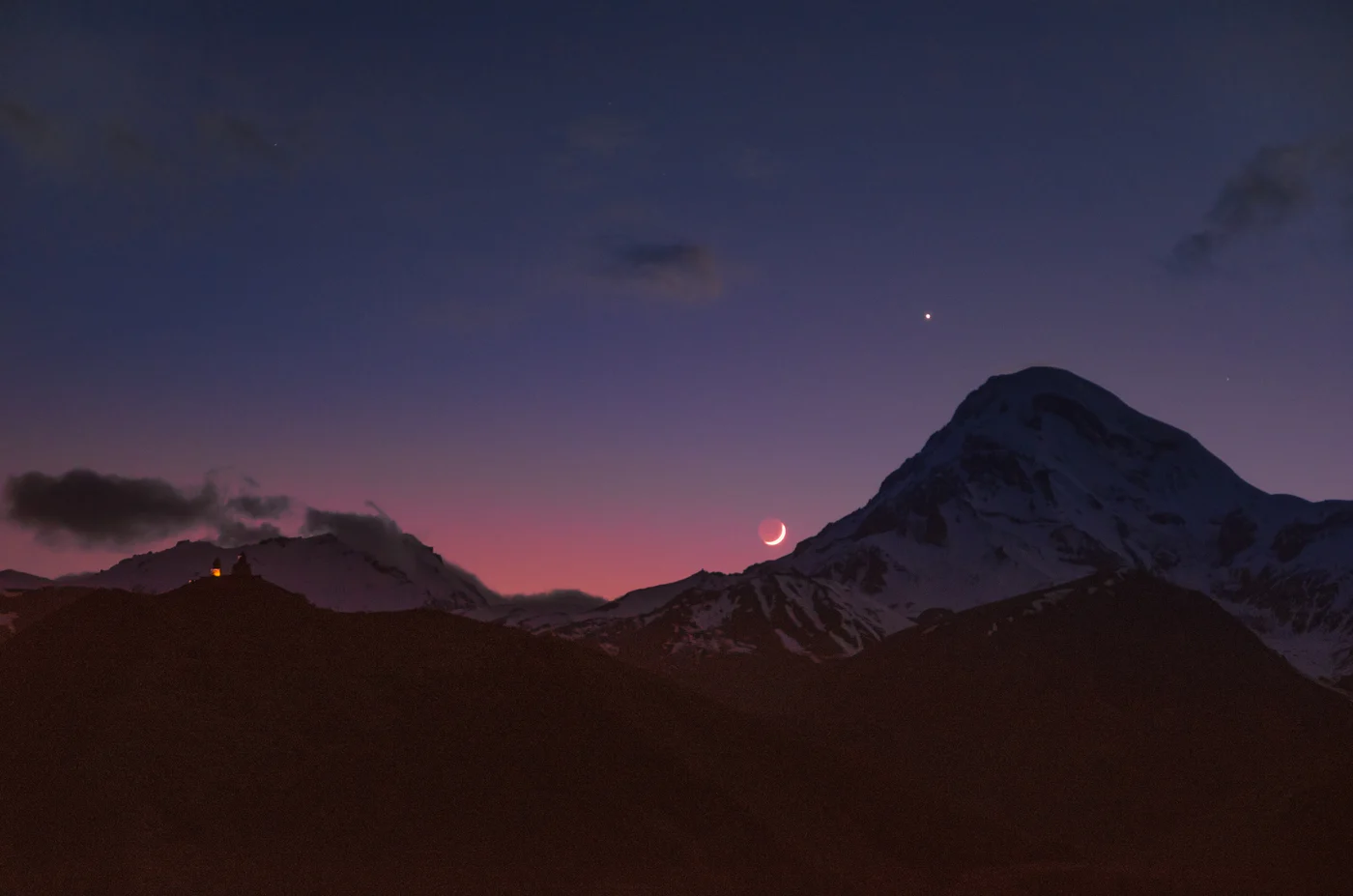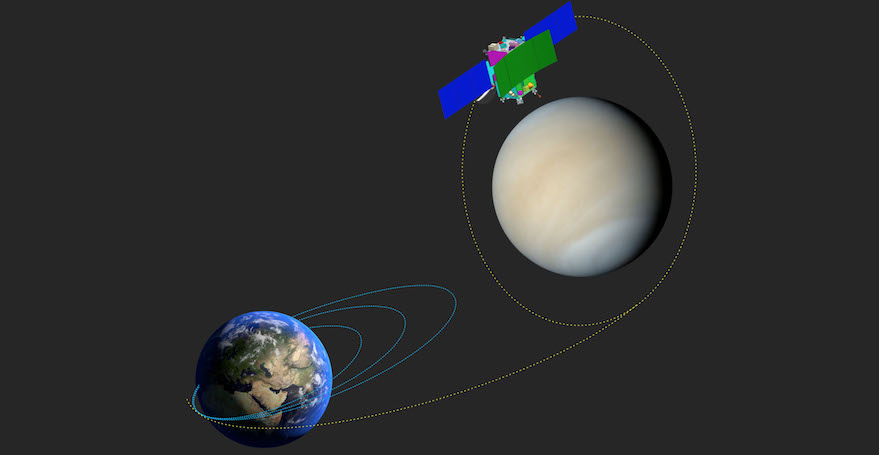
The Indian Space Research Organization (ISRO) will launch its first mission to Venus. According to plans, in December 2024, the orbital probe Shukrayaan-1 will fly to the planet . A spectrometric complex, developed jointly with Russian scientists, VIRAL, will be installed on board the ship. The main goal of the Indian mission is to map the surface and interior of Venus, to study the interaction of solar streams with its ionosphere. Particular attention will be paid to the chemical composition of the planet's atmosphere.
Sulfuric acid clouds, hurricane winds, enormous pressure and temperature at which lead melts. This is not a fantastic picture of the end of the world predicted by Greta Thunberg. On the whole, the situation on Venus is far from optimal for studying the planet, and the "air" above it at all resembles a semi-liquid, semi-gaseous ocean. But this does not stop ISRO, which 3 years ago announced its desire to send the Shukrayan-1 orbital probe to Venus. And this desire has been realized! If all goes well, the spacecraft will be able to explore the planet for 4 years.

Photo: ISRO
Initially , the probe was supposed to be sent a year earlier. But the start has to be postponed due to delays associated with the pandemic. The optimal launch window for missions to Venus, when the planet is closest to Earth, occurs approximately every 19 months.
The exact configuration of the mission has not yet been established; it will be determined in the next 3-6 months. At the moment, the weight of Shukrayan-1 is 2500 kg, of which from 100 to 175 kg is allocated for scientific instruments. The list of candidates for a satellite flight includes 20 devices from Russia, France, Sweden and Germany. According to the application The French Space Agency (CNES), the VIRAL instrument (or Venus Infrared Atmospheric Gases Linker), created jointly with Roscosmos, will also fly to Shukrayan-1.

The probe will fly to Venus for several months. And then it will enter a highly elliptical orbit of 500 by 60 thousand km around the planet. In a year, using air braking, it will descend to an orbit of 200 by 600 km, from which it will conduct scientific research.
Why Venus?
The exploration of Venus began back in the 1960s, when the planet was studied using fly-overs, orbital probes, and several descent vehicles. Scientists hoped to find conditions on the planet suitable for life.

Photo: TASS
The atmosphere of Venus consists of 96.5% of carbon dioxide, 3.47% of nitrogen. There is no oxygen at all. At an altitude of 50-65 km above the planet, the atmosphere, temperature and pressure are almost the same as on Earth. Some scientists even suggested colonizing the upper layers of the Venusian atmosphere.
Over the past 30 years, only 3 human-made spacecraft have flown around Venus. Now, space agencies around the world are again showing interest in the mysterious twin planet of the Earth.
It is not only the Indians who plan to explore Venus. NASA has planned two missions to Venus this year, considering possible launches in 2025 and 2028. The European Space Agency will probably send the EnVision spacecraft to Venus by 2030. In Russia, work is underway on the concept of the orbiter and the Venera-D lander, which will hit the road no earlier than 2023.
With an Indian sweep
India is called the sixth space power in the world. The country has its own manned program, independently launches communication satellites, reentry spacecraft and automatic interplanetary stations to the Moon and Mars.
Since 2008, India has been implementing a solar system exploration program.
By 2022, the country is going to send a manned mission to the moon. At the moment, only three countries send manned missions with their own launch vehicles to the ISS: Russia, the United States and China. The rest use foreign devices.
ISRO named the Lunar Mission Gaganyaan. The flight will cost 1.28 billion rupees (~ $ 17.3 million). The mission will use India's most powerful disposable launch vehicleGeosynchronous Satellite Launch Vehicle Mark III .
